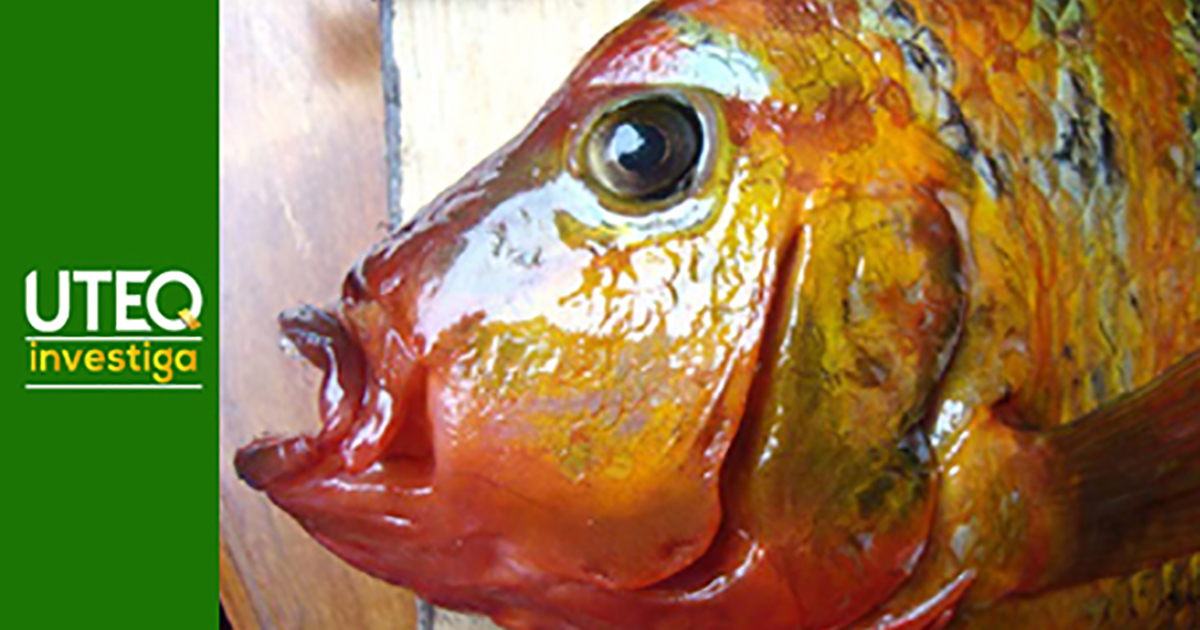Capture and conservation of breeding specimens
Published on 04 from May from 2021

Research carried out by Eng. Jorge Rodríguez, PhD.
The world aquaculture production is the sum of both capture fisheries and fish farming. While the number of kilos in capture fisheries is stabilising, fish farming is increasing production to meet global demand, due to the increase in human population.
World extractive fishing is stabilised at 90 million MT per year and cultivated production contributes with 90 million MT per year (FAO 2020), the latter is limited to cultivating few species in relation to the number of species that exist in the world, so it is necessary to research new species to incorporate them into production and increase diversity and production (FAO, 2012).
This research project was carried out based on the following considerations: the need to conserve the species Vieja colorada (Mesoheros festae, ex Cichlasoma festae), as a genetic resource of the Ecuadorian coast, which is threatened due to indiscriminate capture and water pollution, this gives rise to the need to promote a study for sustainable and sustainable production.
It is necessary to identify the sex by means of phenotypic characteristics in order to determine sexual dimorphism in specimens of Mesoheros festae. It is of great importance to determine the influence of water dynamics for good reproduction in captivity and to determine the physical and chemical factors in the water that favour the reproduction of the old red-coloured rockcod (Mesoheros festae) in captivity.
During the first study, 300 specimens of Mesoheros festae, captured in the Daule-Peripa reservoir, weighing between 150 and 300 grams, were used. The sex of the specimens was immediately determined by means of phenotypic characteristics based on the correlation of external measurements of males and females. Morphometric characters were measured following the conventional method described by (Morales et al. 1998) and (Diodatti et al. 2008). Nine morphometric variables were taken.
In the second phase of the study, with a duration of 180 days, the impact of water dynamics on reproduction and the physical and chemical characteristics of the water were observed, which was determined by the water supply to each pond, continuous flow (T1), average water supply (T2) and watertight water (T3), and the physical factors measured daily and the chemical factors measured every 7 days, with multi-parametric equipment and water analysis kits.
Among the findings, the analysis of external morphometric variables in the first phase of the study showed a substantial degree of differences between the sexes with respect to cranial variables. Males showed an isometric, isometric growth pattern for head height and an accelerated or accelerated growth pattern for pre-orbital and post-orbital distance respectively. However, females showed a retarded growth rate for head height and an isometric growth pattern for pre-orbital and post-orbital distances. These results indicate sexual dimorphism of the skull. Males tend to have a taller head and a more extended pre-orbital area than females, measurements of head length and hump height are important in determining the sex of the fish.
In phase 2, analysis of brood production included three water dynamics; continuous flow (T1), medium turnover, 50% of pond volume, (T2) and still water, 10% of pond volume, (T3). Treatment 2, medium exchange, showed the best spawning response, finding a statistical difference with treatments 1 and 3; water dynamics influences the reproduction of the old red-coloured sculpin (Mesoheros festae). The presence of broods in the pond shows that the old redfish reproduces under controlled conditions.

